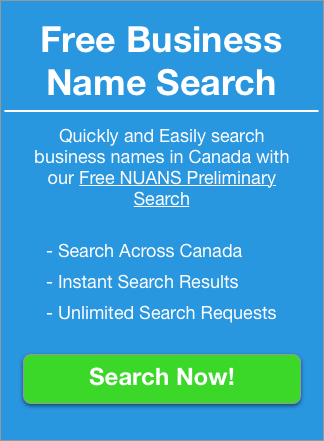How To Create A Content Strategy To Drive Business Goals

Not sure where to begin when it comes to content strategy?
Content strategies can help you reach your business goals no matter your company size.
Creating a content strategy remains a complex process. Content strategies take time to draft and execute. But if done correctly, this time and energy are worth it.
Research shows teams with a clear, documented content strategy benefit in the following ways:
- they see themselves as more effective content marketers
- the aspects of content marketing become easier to understand and accomplish
- likely to regard their work as higher-quality and more efficacious in all areas including social media platforms
- a higher portion of the overall marketing budget becomes justified for content marketing use
Higher morale among your team results in a heightened chance of success in your business goals.
While this can be exciting, careful planning is an essential part of any content strategy.
Let’s run through the details so that you can begin creating your own.
Conduct Research To Ensure You Can Achieve Your Business Goals
Research gives you the information you need to power your entire strategy.
So, what should you research?
- Audience
- Competition
- Content Trends
- Platforms
1. Audience
When it comes to researching your audience go beyond target demographics and behaviour. Conduct market research.
Find out what types of content they engage with. Research their needs. Where do they go when they want new information?
Knowing this information about your audience will help you decide how to best reach them. Think choice of topics and mediums!
2. Competition
Observe your competitors. Take note of their content strategies. Can you find a way in which they do not measure up to the task? How could you improve their work?
Also, take note of the ways they succeed. What can you learn from this success?
Research your competition to gain a better idea of where you exist in the market and how you can stand out.
3. Content Trends
Look at the types of content shared within and outside of your industry. What content types gets shared the most?
For example, current trends like video and interactive content draw a huge buzz online.
4. Platforms
What platforms do your target audience use the most? Are they drawn to certain blog formats? Do they engage more on Twitter than Facebook?
Find the social media platforms they use most. Make them part of your content strategy.
Brain Dump and Set Business Goals
Now that you’ve conducted the necessary research it’s time to put this information to use.
Conduct a massive “brain dump” of all things your company could and should do. Whatever strategy works best for your team, make use of it here. Consider the market research you collected.
Now you’ll need to set specific goals. Are you attempting to fuel your SEO? Attempting to gain higher conversion rates?
Whatever your goal, determine the kind of content you’ll need to accomplish it. Flesh out what creating this content looks like. To do this, consider the nature of the content.
What are the smaller steps you’ll need to take to create this content?
Determine Where To Start
Your team’s brain dump exercise resulted in an enormous amount of ideas.
What now?
You can’t tackle each idea. If you tried, the integrity of your work would suffer. Instead of doing everything mediocre, do one thing very well.
Rank your list into what needs to happen right now. Save the ideas for what you should work on later.
How can you do this?
- Recognize the fastest ways to win that will make an impact
- Start with large projects and break them down. Complete these smaller projects over time.
- Plan out how you can stack projects on top of one and other. Don’t forget about efficiency.
If a project on your desk takes two hours to complete, but will more than double the leads you generate don’t let it fall through the cracks. Set aside those hours.
Get it out of the way fast so you can start seeing returns as soon as possible.
A word of caution: do not look at an enormous project as one enormous project. Instead, break down that project into several small projects or stages. Tackle each one over time.
Types of Approaches Depending On Your Business Goals
Every company’s needs differ. Your company’s industry, size, and available resources contribute to these needs. Consider your strategy and business goals an extension of these factors.
Business goals take many shapes and sizes. So do strategies. A few approaches you might take include:
- Story Driven
- Message-driven or Mission-driven
- Data-Driven
Story driven approaches seek to educate their consumers through, you guessed it, story telling. Companies that offer interactive content might consider this approach.
Message-driven or mission-driven approaches execute the companies business goal in every way.
Data-driven approaches go hand in hand with goals to increase leads by a predetermined amount or percentage. The approach would take this into consideration. The types of content and quality of content would follow.
The most important factor in determining your approach is to make sure it aligns with your business goals.
Before You Move On
Think about your time frames when prioritizing. When do you need to start seeing returns? What do you need to do to get there?
Before you move on to drafting your content strategy, consider your resources.
How much time and money are you willing to invest into your content strategy? Setting a high goal for a short amount of time will cost you.
Draft Your Content Strategy
Now that your goal is clear, come up with the meat of how you’ll get there. The initial design or draft of your strategy will influence all future content.
How do you draft a content strategy that will help you reach your business goals?
Here’s an idea of the path you might take:
- Choose your topics and mediums
- Determine how you will come up with topics in the future
- Lay down a process for drafting, editing, and publishing content
- Figure out how to distribute your content
- Determine the best way to reuse and maximize content
Next, divide your approach into phases. For those new to content strategy, going all in can lead to serious overload.
Consider adopting agile marketing project management. Agile will keep your team organized and on schedule. It also allows your team to practice “sprints” on the main assets at the same time.
This results in content with a reduced time to market. This doesn’t mean your quality should diminish. Quality content is paramount to any strategy.
Add Some Personality
Including personality in your strategy and execution helps your brand achieve its business goals.
Consumers expect personalized content on both ends. Personality helps you connect with your audience and establish trust.
Brand trust accomplishes wonders in the way business goals.
As we said before, consumers expect the content they access online to cater to their individual needs. They want engagement from articles they seek out.
Impersonal content bores your audience. And worse, they may not return to your site.
Get emotional!
If you can connect with your audience on an emotional level they are more likely to share your content. This means free advertising for you.
Including personality in your content strategy helps you stand out among a sea of competitors.
Remain Flexible
Write your content strategy with flexibility as core tenant. At first, your strategy may not prove effective. You might not reach your business goals right away.
If this is the case, collect more information. Ask more questions. Refine your strategy.
Consider incorporating feedback into your strategy. Listen to your consumers. When they react negatively to content, discontinue producing that type of content.
If you experience heightened traffic to specific content, write a follow-up post.
Your content strategy and business goals hinge on feedback and flexibility.
Building a content strategy takes time, effort, and motivation.
Conclusion
Conduct research on your audience and your competition. Use this information to set your goal and draft your plan. Remember to add personal touches to stand out from the crowd.
Most of all, your approach should coincide with your company’s business goals.
These broken-down concepts can help you understand the effort behind a content strategy. With these basic tenants, you can begin to craft your own content marketing strategy!

